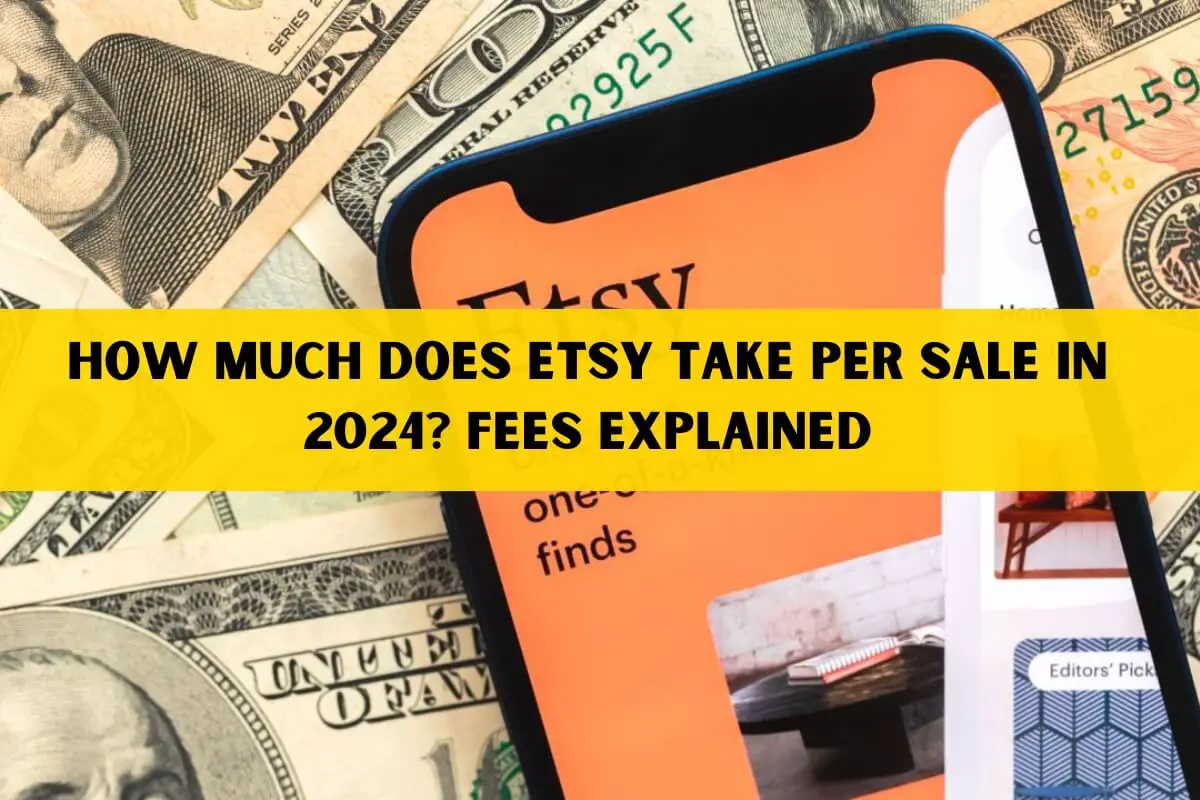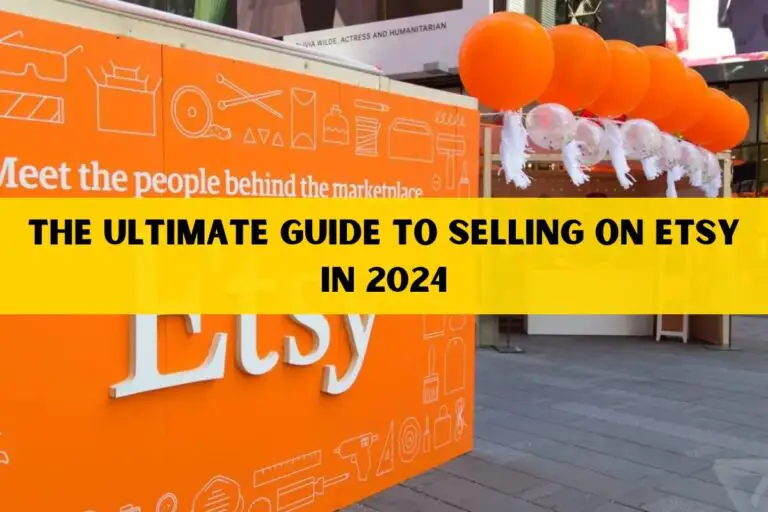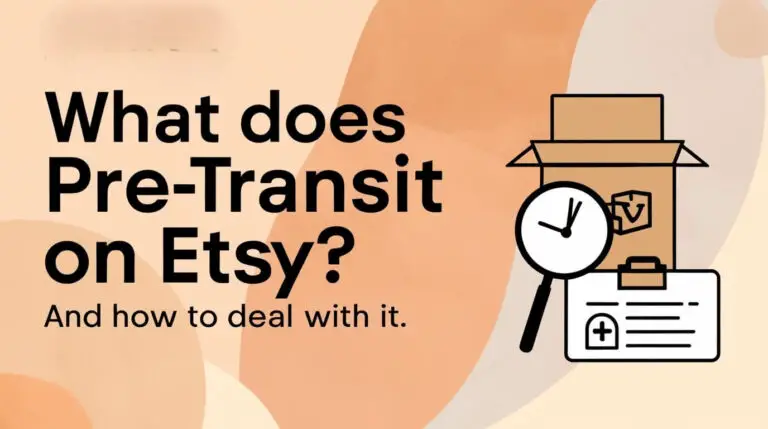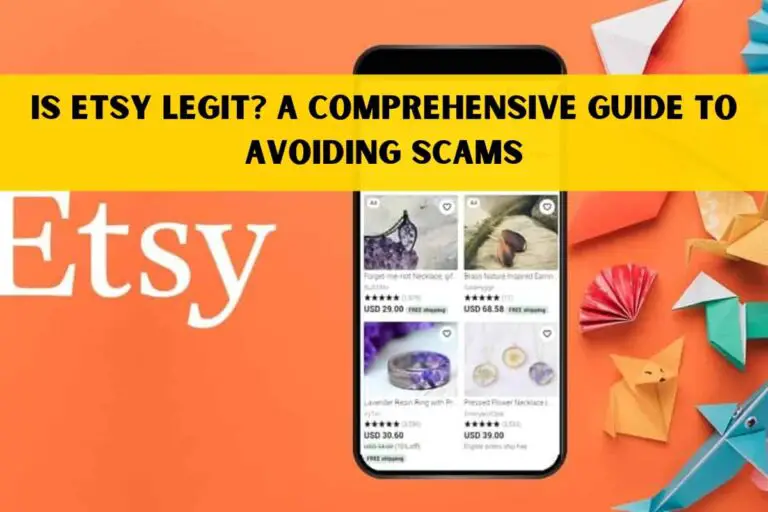How Much Does Etsy Take Per Sale in 2024? Fees Explained

Etsy has emerged as one of the most popular e-commerce platforms, providing a global marketplace for independent creators, artists, and entrepreneurs to sell their unique products. With over 96 million active buyers in 2022, Etsy offers a massive audience and a low barrier to entry for sellers. However, as with any e-commerce platform, selling on Etsy comes with its own set of fees that can impact your overall profits.
So, how much does Etsy take per sale in 2024? The short answer is that Etsy charges a combination of mandatory fees, including listing fees, transaction fees, and payment processing fees, which can range from around 20% to 25% of the total sale price. However, the exact percentage can vary depending on factors such as your location, listing currency, and the use of optional services like advertising or subscriptions.
This guide explains Etsy fees in detail. It covers different fee types, region-specific charges, and tips to boost your profits as an Etsy seller.
Introduction to Etsy Payments and Payment Methods
Before we delve into the fees, it’s essential to understand Etsy Payments, the platform’s built-in payment system. Etsy Payments enables sellers to accept a variety of payment methods from buyers, including major credit and debit cards, Etsy gift cards, Etsy credits, PayPal (where available), Apple Pay, Google Pay, and country-specific payment options.
All transactions on Etsy are processed through the Etsy Payments system, and the associated fees are automatically deducted from your Etsy payment account. It’s important to note that while joining and opening an Etsy shop is free, fees will be incurred once you start listing products and making sales.
Mandatory Etsy Fees
Listing Fees
Every time you list a new product on Etsy, you’ll be charged a flat listing fee of USD 0.20. This fee registers your product for four months, and you can edit the listing as many times as needed without incurring additional costs. However, if your listing expires after four months and you want to renew it, you’ll need to pay the $0.20 listing fee again.
Etsy also charges additional listing fees in certain scenarios, such as:
- Auto-renew sold: If you have enabled the auto-renew feature and your listing sells, Etsy will automatically renew the listing, and you’ll be charged another $0.20 fee.
- Multi-quantity: If a buyer purchases multiple quantities of the same item from a single listing, you’ll be charged an additional $0.20 fee for each additional item sold.
- Private listing: If you create a private listing (unlisted from the public) for a specific buyer, you’ll be charged a $0.20 fee when the item sells.
Transaction Fees
Whenever you make a sale on Etsy, the platform charges a transaction fee of 6.5% of the total sale price, including shipping and gift wrapping costs. This fee is automatically deducted from your Etsy Payments account when a sale occurs.
For example, if you sell an item for $20 with a $5 shipping fee, Etsy will charge a transaction fee of $1.63 (6.5% of $25).
Payment Processing Fees
In addition to the transaction fee, Etsy also charges a payment processing fee for each sale made through the Etsy Payments system. This fee varies based on your location and is typically a fixed rate plus a percentage of the total sale price (including shipping and applicable taxes).
In the United States, the payment processing fee is 3% plus $0.25 per transaction. For example, if you make a sale for $50 (including shipping), the payment processing fee would be $1.75 (3% of $50 + $0.25).
Payment processing fees vary by country, so check Etsy’s help center for rates applicable to your region.
Region-Specific Fees
Etsy sellers may also be subject to additional fees depending on their location, listing currency, and regional regulations. Here are some common region-specific fees:
Currency Conversion Fee
If you list your products in a currency different from the currency of your Etsy Payments account, Etsy will charge a 2.5% currency conversion fee on the total sale amount. This fee is automatically deducted from your Etsy Payments account balance.
To avoid this fee, it’s recommended to list your products in the same currency as your Etsy Payments account currency.
VAT and Sales Tax
Value-added tax (VAT) and sales tax are additional charges that Etsy may be required to collect and remit to the relevant tax authorities on behalf of sellers in certain regions.
- VAT: Etsy collects and remits VAT on behalf of sellers in the European Union and select countries. VAT rates vary by location, and Etsy calculates the applicable VAT based on the buyer’s location and the product category.
- Sales Tax: In most U.S. states, Etsy collects sales tax from buyers and remits it to the appropriate tax authorities. The sales tax rate depends on the buyer’s location and the product category.
If you’re selling from a region where Etsy doesn’t automatically collect and remit taxes, you may need to include applicable taxes in your listing prices. It’s essential to familiarize yourself with the tax laws and regulations in your area to ensure compliance.
Regulatory Operating Fee
In certain countries, Etsy charges a Regulatory Operating Fee due to increased operational costs associated with complying with local regulations. This fee is a percentage of the total sale price, including shipping and any additional costs like gift wrapping or personalization.
The Regulatory Operating Fee varies by country, with rates ranging from 0.32% in the United Kingdom and Italy to 2.27% in Turkey. Sellers in these regions should factor in this additional fee when pricing their products.
Optional Fees
While the fees mentioned above are mandatory for all Etsy sellers, the platform also offers optional services that come with additional fees. These services can be particularly useful for enhancing your store’s visibility, customization, and overall customer experience.
Etsy Ads Fees
Etsy Ads is the platform’s advertising service that helps promote your listings on Etsy’s search results, category pages, and other high-traffic areas. With Etsy Ads, you can set a daily budget ranging from $1 to USD 25.
The higher your budget, the more frequently your listings will appear in Etsy’s advertising spaces. Etsy Ads fees are charged regularly and deducted from your Etsy Payments account balance.
Offsite Ads Fees
In addition to Etsy Ads, Etsy also offers Offsite Ads, which promote your listings on external platforms like social media networks and search engines. If a buyer clicks on your Offsite Ad and makes a purchase within 30 days, you’ll be charged an advertising fee based on your shop’s annual sales volume.
- Less than $10,000 in annual sales: 15% fee on the total sale price
- $10,000 or more in annual sales: 12% fee on the total sale price
The Offsite Ads fee is capped at $100 per order, regardless of the total sale price.
Subscription Fees (Etsy Plus, Pattern)
Etsy offers two subscription options for sellers looking to enhance their store’s capabilities:
- Etsy Plus ($10/month): This subscription provides additional tools and features for growing your Etsy brand, including Etsy Ads credits, a custom web address discount, restock requests from shoppers, advanced store customization options, and discounts on promotional materials.
- Pattern ($15/month): Pattern is Etsy’s website builder tool that allows you to create a personalized website for your Etsy store. With Pattern, you can try a 30-day free trial before being charged the monthly subscription fee.
These subscriptions offer valuable features but add to your expenses as an Etsy seller.
Shipping Label Fees and In-Person Selling Fees
Etsy offers sellers the ability to purchase discounted shipping labels through various carriers, including USPS, FedEx, and others. The cost of these labels depends on factors like the carrier, origin, destination, weight, and dimensions of the package.
If you plan to sell in person, Etsy has partnered with Square Reader, allowing you to sync your listings and accept in-person payments. For non-synced listings, you’ll be charged a $0.20 transaction fee per sale, while synced listings with multiple quantities will incur the same $0.20 renewal fee as on Etsy.
Percentage Etsy Charges to Sell
Based on the various fees discussed above, Etsy typically charges sellers between 20% to 25% of the total sale price. However, the exact percentage can vary depending on factors such as your location, listing currency, and the use of optional services like advertising or subscriptions.
To illustrate this, let’s consider an example of a seller in the United States selling a print-on-demand t-shirt through Printify, priced at $21.70 (including shipping) to a customer in California, where the current clothing sales tax rate is 7.25%.
Here’s a breakdown of the potential fees and costs:
Cost Description Amount (USD)
Buyer’s price (including shipping) is $21.70
Etsy Listing fee $0.20
Etsy Transaction fee (including shipping) $1.41
Etsy Payment Processing fee $0.90
Sales tax paid by buyer $1.57
Total Etsy fees $4.08
Profit from Etsy withdrawal $17.62
Printify Production fee $9.82
Printify Shipping fee $4.00
Total Printify order costs $13.82
Final profit $3.80
Etsy’s total fees are around 19.1% of the sale price. For sellers in regions with VAT fees, Etsy’s total fees could be around 30% of the sale price.
To maximize profits, sellers should consider factors such as minimizing shipping costs by choosing local print providers and optimizing their pricing strategies to account for Etsy’s fees.
Pros and Cons of Selling on Etsy
Like any e-commerce platform, selling on Etsy has its advantages and disadvantages. Understanding these pros and cons can help you make an informed decision about whether Etsy is the right fit for your business.
Pros of Selling on Etsy
- Low Barrier to Entry: With minimal upfront costs (a $0.20 listing fee), Etsy provides a low-risk entry point for aspiring entrepreneurs and small businesses.
- Established Marketplace: Etsy boasts a massive audience of over 96 million active buyers, offering sellers access to a vast customer base without the need for extensive marketing efforts.
- Niche Market Focus: Etsy caters to a specific niche market of handmade, vintage, and unique products, allowing sellers to target a dedicated customer base interested in their offerings.
- User-Friendly Platform: Etsy’s user-friendly interface and tools make it relatively easy for sellers to set up and manage their online stores, even with limited technical expertise.
Cons of Selling on Etsy
- Fees and Competition: While Etsy’s fees may be manageable for small-scale sellers, they can significantly impact profits as sales volume increases. Additionally, the platform is highly competitive, with numerous sellers vying for the same customer base.
- Limited Customization: Etsy’s standardized storefront templates and branding guidelines can restrict sellers’ ability to fully customize their online presence and differentiate themselves from competitors.
- Lack of Control: As a third-party platform, Etsy maintains control over various aspects of the selling process, including policies, fees, and platform features, which can change without input from sellers.
- Potential for Policy Violations: Etsy has strict policies regarding acceptable products and seller conduct, and violations can result in account suspensions or terminations, potentially disrupting your business operations.
Tips to Save on Etsy Fees
While Etsy’s fees are a necessary part of selling on the platform, there are several strategies you can implement to maximize your profits and minimize the impact of these fees:
- Offer Free Shipping: Providing free shipping can be an effective way to attract customers and offset the costs associated with Etsy’s transaction and payment processing fees.
- Set Prices in Your Bank Account’s Currency: By listing your products in the same currency as your Etsy Payments account, you can avoid the 2.5% currency conversion fee charged by Etsy.
- Evaluate Which Listings to Run Ads For: Carefully select the products you promote through Etsy Ads or Offsite Ads, focusing on your best-selling or highest-demand items to maximize the return on your advertising investment.
- Increase Prices (If Feasible): If your products consistently receive sales and have a loyal customer base, consider increasing your prices to compensate for Etsy’s fees while remaining competitive in the market.
- Explore Print-on-Demand Services: Services like Printify offer a low-risk entry into e-commerce by handling product manufacturing, fulfillment, and shipping automatically, allowing you to focus on marketing and sales without significant upfront investment costs.
Final Thoughts
Understanding Etsy’s various fees is crucial for sellers to accurately calculate their potential profits and make informed decisions about pricing strategies, marketing efforts, and overall business operations.
Etsy’s fees may be high, but its low entry costs, established marketplace, and niche focus make it a great option for entrepreneurs and small businesses.
By carefully evaluating the pros and cons of selling on Etsy, implementing cost-saving strategies, and considering print-on-demand services like Printify, sellers can navigate the world of Etsy fees and maximize their earning potential on this popular e-commerce platform.





